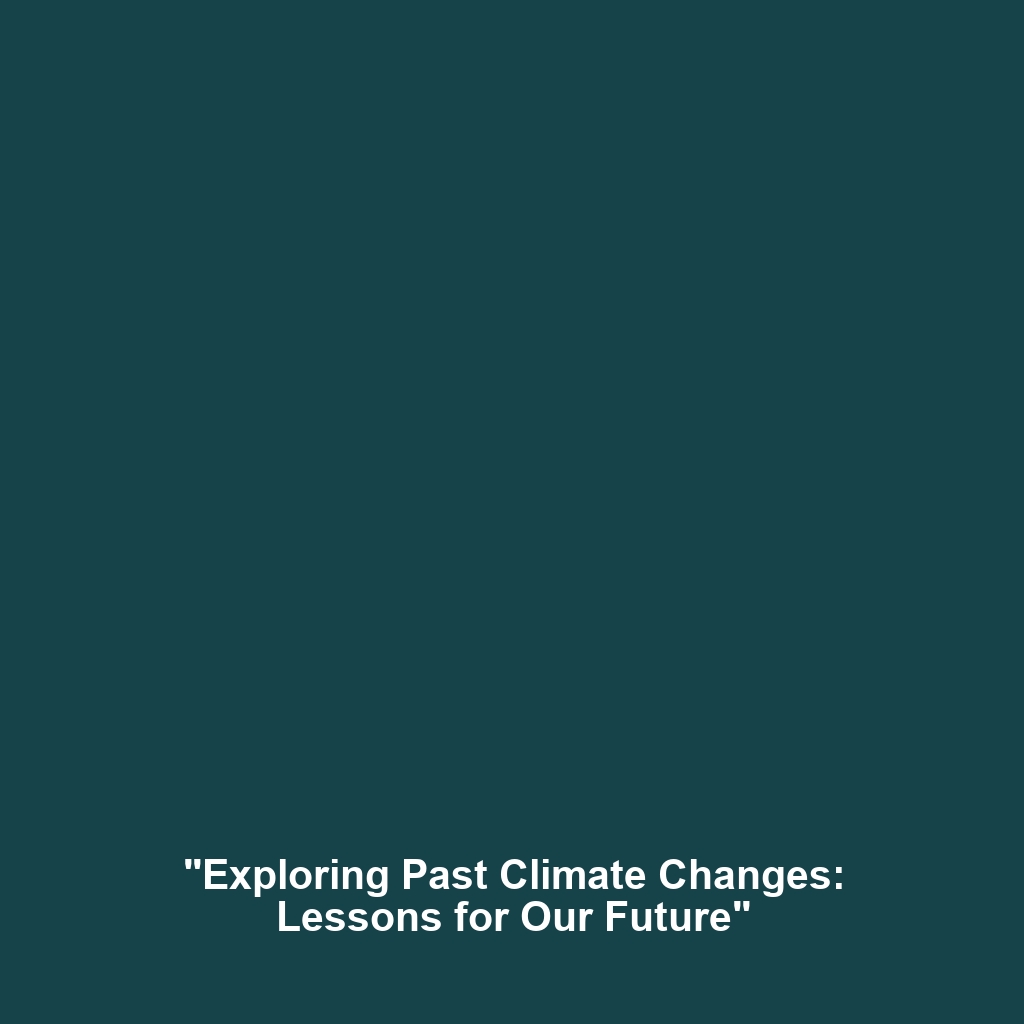Why Study Past Climate Changes?
The study of past climate changes holds critical significance in the field of Climate History. By understanding how the Earth’s climate has transformed over millennia, we gain insights that are essential for addressing contemporary climate issues. Studying historical climate patterns not only allows us to comprehend the natural variability of the climate system but also enables us to anticipate future climate scenarios. This article delves into the importance of past climate changes and their implications within Climate History.
Key Concepts
Understanding the principles behind the study of past climate changes involves several key concepts:
- Paleoclimatology: This is the scientific study of past climates, utilizing data extracted from ice cores, tree rings, and sediment layers to reconstruct historical climate patterns.
- Climate Proxies: Indicators such as fossils, isotopes, and geological features that provide indirect evidence of climate changes.
- Natural Climate Cycles: Understanding events such as glacial-interglacial cycles and the influence of solar radiation and volcanic activity on climate shifts.
These concepts are pivotal in framing our insights regarding climate history and its relevance in current climate debates.
Applications and Real-World Uses
Studying past climate changes yields significant applications in various fields:
- Climate Models: Historical data enhances the accuracy of climate models used for predicting future climate trends.
- Policy Development: Insights from past climate events inform governmental policies aimed at mitigating climate change impacts.
- Disaster Preparedness: Understanding the frequency and severity of past climatic events assists in preparing for future disasters.
These applications demonstrate how studying past climate changes enriches our approach to climate history, portraying a comprehensive understanding of environmental dynamics.
Current Challenges
Despite its significance, the study of past climate changes faces several challenges:
- Data Limitations: Accessing comprehensive data from certain periods can be difficult, hindering accurate reconstructions.
- Technological Constraints: Advanced technology is often required to analyze and interpret data from climate proxies.
- Interdisciplinary Collaboration: Bridging gaps between various scientific disciplines remains a challenge in effectively interpreting climate data.
Addressing these challenges is crucial for enhancing our understanding of climate history.
Future Research and Innovations
The future of studying past climate changes is promising, with several innovations on the horizon:
- Next-Generation Climate Models: Upcoming research aims to improve simulation accuracy by incorporating better data from various proxies.
- Data Mining Techniques: Advanced computational methods are being developed to sift through large datasets efficiently.
- Public Engagement Technologies: New platforms are emerging to engage the public in climate history research, promoting awareness and action.
These innovations will play a vital role in shaping the future of Climate History.
Conclusion
In summary, studying past climate changes is critical not only for understanding the intricacies of Climate History but also for addressing present and future climate challenges. It empowers scientists and policymakers to make informed decisions that can lead to effective climate action. To learn more about related topics, explore our articles on climate models and natural climate cycles.



